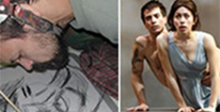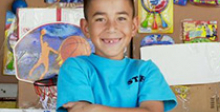Internal mini form
Contact Us Today
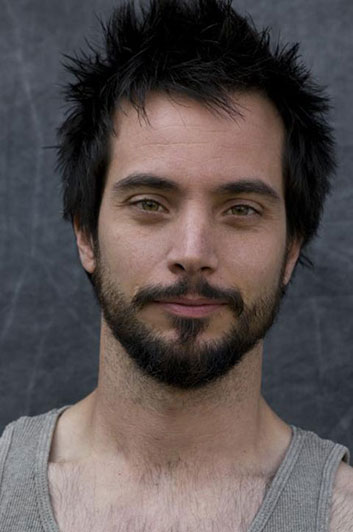
Gregg Mozgala
Dancer and Actor
Choreographer helps Gregg Mozgala, who is both untrained in dance and has Cerebral Palsy, transcend his limits on the New York stage in “Diagnosis of a Faun”
Dance expands actor’s movement, creativity
On the stage, his movements were both dramatic and precise. Each broad gesture and rotation is a testament to his body’s strength and mind’s will.
When Gregg Mozgala is on stage, it’s a whole new world for him, a transformation of his body and soul, and one that he was never sure he could achieve. Gregg, now 34 and a working actor and writer living in New York City, has what he describes as a mild to moderate case of spastic Cerebral Palsy; dance was never something he thought he would include on his long list of acting credits.
All of that would change after Tamar Rogoff, a choreographer, saw Gregg’s performance as Romeo in an Off Broadway production of “Romeo and Juliet.” During this performance, Tamar saw Gregg’s propensity for movement.
“I am an actor and writer primarily,” he said. “Before I met Tamar, I had never danced professionally. I loved to move and considered myself a good dancer, but I had a very limited movement vocabulary. I relied primarily on my upper body, but had limited flexibility, range of motion and balance.”
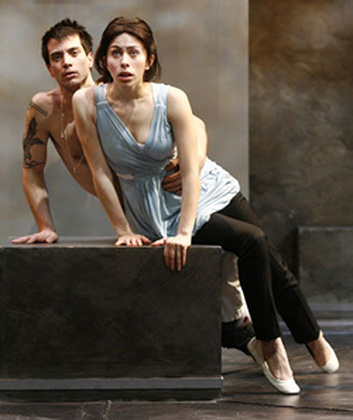
Gregg Mozgala and Emily Young in the Shakespeare tragedy “Romeo and Juliet.”
Tamar contacted Gregg, and the partnership led to the creation of “Diagnosis of a Faun,” a dance performance that made its debut at the La Mama E.T.C. in December 2009, and ran for 12 weeks. But Gregg’s excursion into the world of dance was just beginning. By June 2010, “Faun” was commissioned by VSA, the international organization on arts and disability which is based in the Kennedy Center in Washington DC. Mozgala performed at the center as part of the 2010 International VSA Festival.
From there, “Faun” traveled to Middlebury College in Vt., the Hylton Performing Arts Center in Manassas, Va.; Georgian Court University in Lakewood Township, NJ; and the Baryshnikov Arts Center in Manhattan, NY.
By the end of its run, the dance piece had not only transformed Gregg as a performer, but also how he saw himself and his abilities.
“I will always have Cerebral Palsy. But I now have a better understanding of just what that is, how it affects me personally, and how I can manage it better on my own, from within. That’s huge.”
– Gregg Mozgala
“What learning to dance did was show me what parts of my body I was under-utilizing that weren’t necessarily affected by my CP,” Gregg said. “The greatest take away for me from the entire experience is learning that my body and nervous system are, in fact, educable. The body understands its own inherent design and wants to be in a positive alignment.
“I will always have Cerebral Palsy,” he added. “But I now have a better understanding of just what that is, how it affects me personally, and how I can manage it better on my own, from within. That’s huge.”
Growing up Gregg
Gregg Mozgala is from Hickory, NC. His father was in the U.S. Navy; the family was stationed in several communities throughout Gregg’s childhood. He is the third child born to David and Patricia Mozgala, his siblings are Jeff, Amanda and Meredith.
Diagnosed with spastic Cerebral Palsy at about 2 years old, Gregg said the condition affected his gait and motor functions. However, he described his childhood as mostly normal; his was a conservative military household that was comfortably middle class.
Gregg admits his upbringing was anything but ‘typical,’ but I would say it wasn’t much different than the experience of most middle-class, American families in the 80’s and 90’s.
Gregg displayed a creative streak he cultivated as a teen when he spent his senior year of high school at the University of North Carolina School for the Arts. He would move on to Boston University, Mass, where he earned a bachelor’s degree in fine arts. He furthered his skills at The London Academy of Music and Dramatic Arts in the U.K.
In 2000, he pursued his dreams of being an entertainer and moved to the Big Apple.
As dreams of the Great White Way (an endearing term for the allure of the magnificently, illuminated Broadway Theatre District) beckoned, he worked at “a million jobs” to support his aspirations until he formed his own theater company called The Apothetae, which focuses on aspects of what Gregg calls the “Disabled Experience.”
“I worked corporate office jobs until 2007, when I decided to commit to being an actor full-time,” he said. “I’m still pursuing acting, and now, developing work for The Apothetae.”
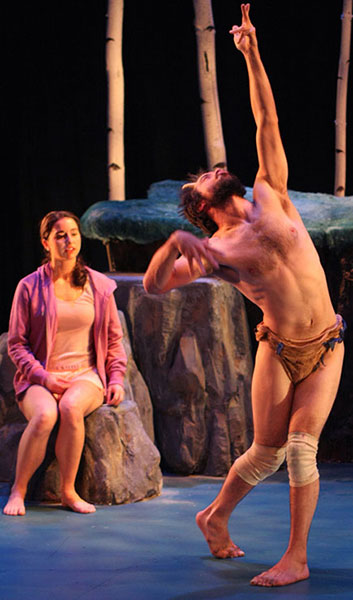
Gregg Mozgala with dancer Lucie Baker in “Diagnosis of a Faun.”
To date, Gregg has appeared extensively in Off Broadway productions, ranging from contemporary fare to modern classics such as “To Kill a Mockingbird” to Shakespeare’s “The Merchant of Venice” and “Romeo and Juliet.”
Some, though not all, of the productions in which Gregg has performed were staged by troupes that feature actors with physical challenges. “Merchant” and “Romeo” were produced by Theater Breaking Through Barriers, the only Off Broadway theater dedicated to advancing the work of artists, writers and performers with disabilities.
To date, Gregg has 23 theatrical credits; in addition to five film credits.
A fateful meeting
Gregg’s evolution as a dancer, and his performance in “Faun,” is the result of meeting the right choreographer at the right time.
“I can’t talk about what makes me different as a dancer without talking about what makes Tamar different as a choreographer. She has the knowledge and a love for the body that is unparalleled,” Gregg said. “She never asks a dancer to repeat certain steps or combinations she has come up with. Instead, she asks you to employ parts of your body or work with negative space between areas in your body or another dancer.”
It took about a year to develop “Faun” and as soon as Gregg started rehearsals, he knew a challenge was ahead of him.
“When I first started, it became very apparent that I couldn’t move or dance for any length of time without falling down,” he said. “I had no balance, and a very limited movement vocabulary.
“I gained a more intimate knowledge of my body and its various parts. Everything with CP is a learned behavior. We generally make our compensations that allow us to stand, walk, and move through the world … We are stuck employing those compensations and don’t understand that we have other options.”
– Gregg Mozgala
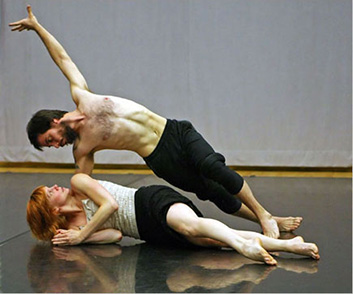
Gregg Mozgala and dancer Emily Pope-Blackman during a rehearsal for “Diagnosis of a Faun” in 2009.
“By working painstakingly on my alignment, gaining knowledge of my individual body parts and by discovering the power of moving from areas closer to my midline as opposed to my extremities I was able to gain more control,” he said. “Learning to partner with another dancer is one of the hardest things I have ever had to do in my life.”
What Gregg learned about his abilities while he was training as a dancer was profound, he said.
“I gained a more intimate knowledge of my body and its various parts,” he said.
“Everything with CP is a learned behavior. We generally make our compensations that allow us to stand, walk, and move through the world … We are stuck employing those compensations and don’t understand that we have other options.”
Gregg also discovered, much to his delight, that although he cannot separate himself from his Cerebral Palsy, his physicality was conducive to dance movements.
“It’s actually easier for me to dance than it is to walk,” he said. “That may sound strange, and I’m not sure quite how to explain it, but it’s true. Dance requires great focus and attention, as well as imagination and a spirit of improvisation.”
Despite the confidence Gregg developed in his ability to dance, he still experienced nervousness before he took the state to perform “Faun” for the first time.
“I remember thinking I was going to break something or fall off the set,” he said. “Due to the nature of the choreography … I had a script that I could refer to at every moment throughout the hour plus-long performance. That sustained me and kept me grounded.”
Today, Gregg is no longer dancing, but he is focusing on other aspects of his career. He’s focusing on acting and writing, developing new projects for The Apothetae, and teaching individuals with Cerebral Palsy what he has learned about performance.
“Faun” introduced opportunities to speak about disability. Gregg and Tamar have appeared at universities such as Harvard, Eastern Carolina University, and the Fashion Institute of Technology, as well as Lurie Children’s Hospital in Chicago, Ill. Gregg also gave the keynote address at United Cerebral Palsy of Oregon and SW Washington’s Family Conference, where the theme was, “A Community for Everyone.”
Gregg said Cerebral Palsy should never be an obstacle to achieving dreams, and that all of us face barriers, real or perceived.
“If you’re passionate about it, do it,” Gregg said. “It won’t be easy. Artistic professions are difficult for anyone regardless of ability. Seek out the best training you can and never lose your sense of curiosity or fascination with your craft.
“Be kind to everyone you meet,” he said. “Everyone is in the struggle for their life.”
For more information on Gregg:
To learn more about Gregg, visit Gregg Mozgala’s Website.
To learn more about The Apothetae, visit The Apothetae.

Artists with Cerebral Palsy
Painting is a popular pastime with an end result that’s as precise as the skill required to compose and execute images on canvas. Artists with Cerebral Palsy, however, know that the most intricate brushstrokes are often not made by the hand or fine motor skills alone.
- Anne Abbott – Painter
- Zach Anner – Comedian
- Josh Blue – Comedian
- AJ Brown – Painter
- Zach Fenell – Inspiring Writer
- Mark Giovi – Singer
- Rick Hohn – Motivational Speaker
- Hank Holland – Painter
- Geri Jewell – Actor and Comedienne
- Dan Keplinger – Artist
- Gregg Mozgala – Dancer
- Andrew Pilkington – Graphic Artist
- Ron Sapinoso – Filmmaker
- Paul Smith – Typewriter Artist


